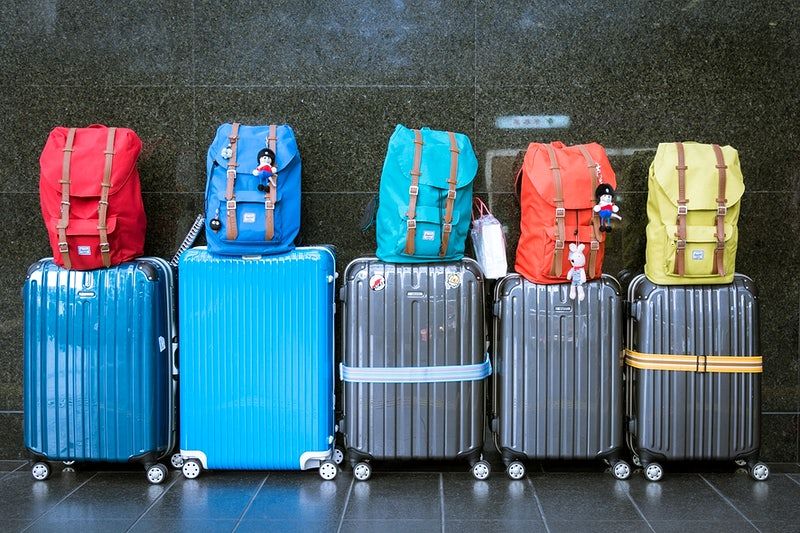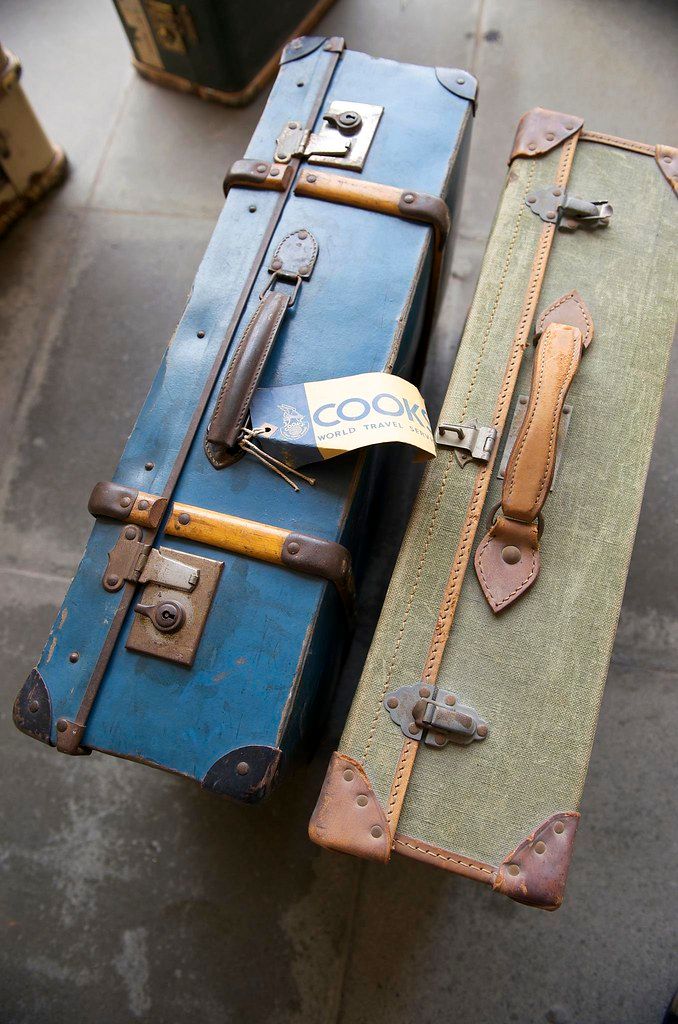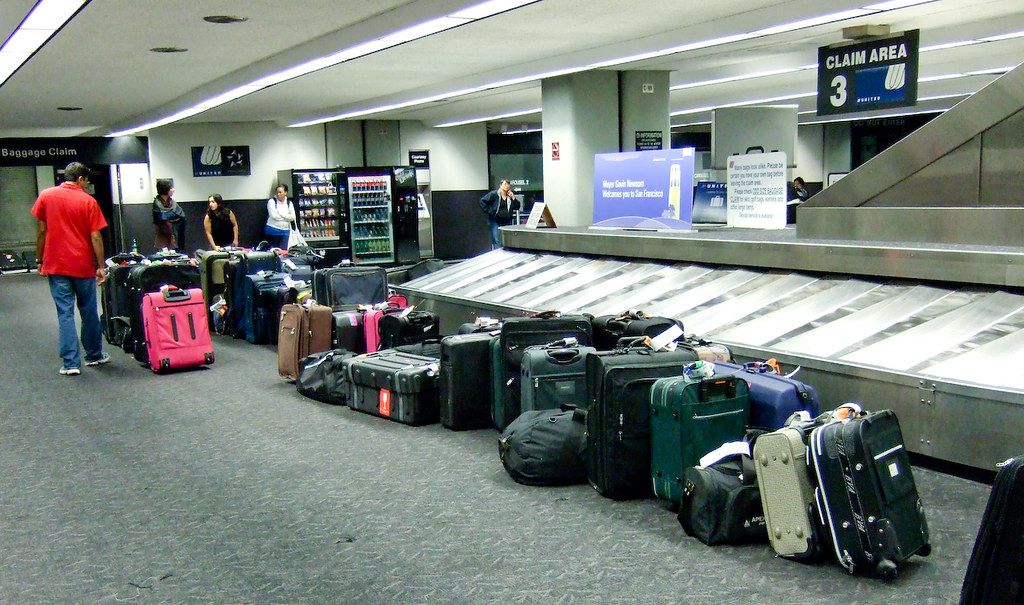
Remember when smart luggage was poised to revolutionize travel forever? Those sleek, tech-laden suitcases promised to charge our phones, weigh themselves, GPS-track their location, and even, in some audacious visions, practically walk themselves through airports. For a brief, dazzling period between 2015 and 2017, brands like Away, Raden, and Bluesmart captured imaginations, seeming to usher in an era where our luggage was as connected as our smartphones. It was a compelling pitch: why carry separate chargers, scales, and trackers when your suitcase could do it all, making the travel experience smoother and more efficient?
Then came the inevitable crash. The meteoric rise of smart luggage met significant turbulence in the form of airline bans, battery fire risks, and a wave of bankruptcies that left many early adopters with expensive, unsupported bags. The initial excitement quickly gave way to frustration as travelers found themselves owning luggage they couldn’t legally use or whose promised ‘smart’ features vanished overnight as companies folded. It became a cautionary tale about jumping on tech trends too quickly, highlighting that innovation without robust foundational reliability is often short-lived.
As we navigate through 2025, smart luggage occupies a strange middle ground. While some truly useful features have been absorbed into mainstream luggage design, many aspects that once defined the ‘smart’ revolution have either been abandoned or evolved into more practical, compliant forms. However, the market still holds options that, based on past failures and current practical considerations, are simply not worth your investment if reliability and hassle-free travel are your priorities. We’ve unpacked the complete story to help you identify which smart luggage options are best left on the shelf, ensuring your high-tech travel gear doesn’t become a source of stress.

1. **Luggage with Non-Removable Batteries**The single biggest blow to the first generation of smart luggage came on January 15, 2018, a date etched in infamy for early adopters. The FAA announced a pivotal ban on luggage with non-removable lithium-ion batteries in checked baggage, citing undeniable fire risks. This immediate regulatory shift sent shockwaves through the nascent industry, with airlines quickly implementing even stricter policies that left thousands of travelers owning bags they could no longer legally use on flights, effectively rendering them expensive paperweights for air travel.
The core problem was a fundamental design flaw in most early smart bags: their batteries were permanently integrated. Removing them wasn’t just difficult; it often required specialized tools, risked damaging the luggage, and in many cases, voided the product’s warranty. Some manufacturers attempted to claim their batteries were “removable,” but the reality was that they were never designed for easy, user-friendly extraction by the average traveler, particularly not at a busy airport security checkpoint or gate.
This ban wasn’t just a temporary inconvenience; it signaled the essential death of that first iteration of smart luggage. The new rules of the game are clear and unyielding: batteries must be easily removable without tools in under two minutes, and bags with non-removable batteries are banned in checked luggage entirely. Any smart luggage today that fails to meet this straightforward requirement is fundamentally unreliable for air travel and should be immediately skipped, regardless of its other flashy features. It’s a non-starter for compliance and, by extension, for worry-free travel.
Even with modern bags that claim “removable” batteries, it’s crucial for consumers to meticulously read the fine print. How quickly can you actually remove it? Can you do it in under 60 seconds? What is the actual capacity? These are not trivial questions, as you’ll likely need to perform this task under pressure at airport security or at the gate. If a battery is difficult to access, or if the manufacturer’s claims are ambiguous, then that smart luggage design still carries the legacy burden of its unreliable predecessors.
Ultimately, a bag with a non-removable battery is an antique in the current travel landscape, designed for a past era of regulations. Investing in such a piece of luggage today guarantees a frustrating, non-compliant, and unreliable experience, forcing you to check bags you intended to carry on, or worse, having your luggage rejected entirely. This single feature, or lack thereof, is the most critical determinant of a smart bag’s practicality in 2025.
Read more about: The 2025 TSA Packing Bans Have Arrived: What’s Now Off-Limits in Your Luggage and How to Avoid Travel Headaches
2. **Bags from Unproven Startups**The regulatory shift concerning batteries had a devastating secondary effect: it paved the way for what became known as the “Startup Graveyard.” The smart luggage industry, initially buoyed by hundreds of millions in funding and captivating venture capital, saw dozens of brands disappear almost overnight. Companies that once commanded impressive valuations, like Raden with its $1.4 billion peak, shut down entirely. Bluesmart liquidated its assets in the same year, and even niche innovations like Modobag, the “rideable” smart suitcase, closed their doors.
The problem for early adopters wasn’t just the battery ban; it was the sudden lack of support for their expensive products. When a startup goes bankrupt, its proprietary apps often stop working, warranties become meaningless, and any promise of customer service or spare parts vanishes. Travelers were left with technologically advanced, yet now defunct, bags that could no longer utilize their ‘smart’ features, turning a cutting-edge purchase into a quickly obsolete liability. It was a harsh, cautionary tale about entrusting your essential travel gear to companies lacking proven staying power.
This historical precedent highlights a crucial aspect of luggage reliability: longevity of manufacturer support. Unlike traditional luggage, smart bags rely on an ecosystem of software, firmware updates, and potentially remote services to function. If the company behind the bag disappears, that ecosystem collapses. An expensive smart bag with a dead app or no firmware updates quickly becomes a “dumb” bag that likely cost significantly more than its non-smart counterpart, without any of the promised long-term benefits.
Therefore, a key indicator of reliability for smart luggage in 2025 is the manufacturer’s track record. Stick with companies that have proven staying power, ideally traditional luggage manufacturers like Travelpro, Samsonite, or Tumi, who have successfully adapted smart features into their existing, established product lines. These brands are far more likely to support their products long-term, offer reachable customer service, and provide warranty coverage that actually means something.
Skipping bags from unproven startups minimizes your risk of ending up with unsupported, prematurely obsolete products. It’s an investment in peace of mind, ensuring that the ‘smart’ features you pay for will continue to function throughout the lifespan of your luggage, rather than disappearing when the next venture capital cycle ends. Reliability, in this context, extends beyond the physical bag to the ongoing viability of the company behind the technology.

3. **Over-Priced Smart Luggage for Infrequent Travelers**While the allure of smart features is strong, it’s critical to conduct a realistic cost-benefit analysis, especially if you’re not a frequent flyer. Smart features inevitably add a premium to the cost of luggage, typically increasing the price by $50 to $200 compared to a comparable traditional bag. For a traveler who takes only one or two trips per year, this additional expense is incredibly difficult to justify, as the benefits of integrated charging, tracking, or weighing simply don’t accrue enough to offset the higher upfront investment.
The value proposition of smart luggage is intrinsically linked to its utilization. If you take 10 or more trips per year, as highlighted in the context, the premium paid for smart features gets distributed across many journeys, potentially saving time and hassle repeatedly. For the infrequent traveler, however, these intermittent uses rarely amount to enough tangible benefit to make the significant price difference worthwhile. The convenience factors that might save a frequent flyer hours over a year translate into mere minutes saved for someone traveling occasionally.
In such cases, the “smartest” choice for the budget-conscious, infrequent traveler is often a high-quality standard bag coupled with separate, portable accessories. A portable charging pack from Anker or RAVPower, often more powerful and cheaper than integrated options, can cost $30-50. An Apple AirTag or Tile Pro for tracking is $29-35. Add a portable luggage scale for $10-25. These separate components collectively offer superior functionality, flexibility, and often a lower total cost than a fully integrated smart bag, while providing greater reliability as they can be replaced or upgraded independently.
Therefore, if your travel schedule is light, investing in an over-priced smart bag is a definite skip. The money would be far better spent on a higher-quality traditional bag that prioritizes durable materials, smooth-gliding wheels, and a sturdy handle, rather than on tech gimmicks you’ll rarely use. These fundamental aspects contribute far more to a reliable and comfortable travel experience than an intermittently used USB port or a seldom-checked tracking feature.
For example, the Sherpani Meridian 22″ Carry-On at $170 or the CALPAK Hue Carry-On Luggage at $215 offer excellent value, focusing on core luggage quality without the additional tech premium. Choosing these options ensures that your investment goes towards foundational reliability, which is paramount for any traveler, regardless of how often they fly.

4. **Smart Luggage with Integrated GPS (Proprietary)**Early smart luggage systems boasted integrated GPS tracking to locate lost bags anywhere in the world, a feature that sounded like pure sci-fi magic. While the promise was compelling, the reality proved less reliable and more costly than anticipated. These proprietary systems relied on the luggage manufacturer to build and maintain complex tracking infrastructure, a costly endeavor that many startups simply couldn’t sustain in the long run. When companies like Bluesmart liquidated, their tracking services often ceased to function, leaving users with a bag that had a dormant, useless GPS module.
The landscape for luggage tracking has fundamentally shifted. Today’s “smart” travelers simply drop an Apple AirTag ($29) or Tile Pro ($35) into their luggage. This approach is not only significantly cheaper but also inherently more reliable. Instead of depending on a single luggage manufacturer’s potentially fragile infrastructure, these universal trackers leverage vast existing networks—Apple’s Find My network or Tile’s community—offering robust, real-time location data without the baggage manufacturer needing to maintain any tracking service.
Many modern bags have cleverly adapted to this trend, now including dedicated pockets or slots designed specifically for these third-party trackers. This evolution means that smart luggage with its own integrated, proprietary GPS system is often an unnecessary and less reliable investment. You’re paying a premium for a feature that can be replicated more effectively and affordably by a separate device. Furthermore, the reliance on a specific brand’s app for tracking introduces another potential point of failure; if the app is no longer supported or updated, your tracking capabilities diminish.
The ‘Universal Solutions Work Better’ principle strongly applies here. Why lock yourself into a single brand’s tracking ecosystem when widely adopted, independent devices offer superior flexibility and assurance? You can replace or upgrade an AirTag or Tile independently without needing to buy an entirely new piece of luggage. This modular approach significantly enhances the long-term reliability of your tracking solution, ensuring that you can always locate your belongings regardless of the fate of your luggage brand.
Therefore, smart luggage that features a proprietary, built-in GPS system is a feature to be wary of and often skipped. The market has provided more efficient, reliable, and cost-effective alternatives that empower the traveler with direct control over their tracking, rather than relying on a potentially unstable manufacturer-specific service. Focus on bags that provide excellent core functionality and perhaps a dedicated pocket for a trusted third-party tracker, which is the truly smart choice in 2025.
5. **Smart Luggage Prioritizing Tech Over Core Quality**The initial fervor around smart luggage often led manufacturers, particularly startups, to prioritize adding flashy technological features over perfecting the fundamental purpose of a suitcase: reliably carrying and protecting belongings. This created a scenario where bags boasted impressive tech specifications but fell short on essential aspects like durable materials, robust wheels, and sturdy handles. The hard lesson learned from the “hype cycle” is that what travelers genuinely value most is “Reliability Over Innovation.”
A bag that performs perfectly for ten years—rolling smoothly, protecting contents, and meeting airline requirements—will always outperform one with cool features that break or become obsolete within two. This is why manufacturers, as tech features waned, wisely redirected their investment toward improving materials, wheels, and overall construction. Travelers quickly discovered that they often preferred a really well-made “dumb” bag to a technologically “smart” one that compromised on its core luggage function.
When evaluating smart luggage, the core quality of the bag should always be the primary consideration. Ask yourself: would this luggage still be excellent even if I never used its technological features? Does it roll effortlessly? Are the zippers robust? Is the handle wobble-free? Does it fit airline requirements without its smart components adding unnecessary bulk? If the answer to these questions isn’t a resounding yes, then the smart features are merely a distraction from a fundamentally unreliable piece of luggage.
This isn’t to say technology can’t enhance a bag, but it should be secondary to the bag’s foundational integrity. For instance, the Bric’s Life Tropea Spinner Carry On, priced at $390 and weighing 6.2 lbs, exemplifies this philosophy. It focuses on quality construction, Italian craftsmanship, and durability rather than tech gimmicks. While it may not have a built-in USB port, its reliability as a piece of luggage far outweighs the fleeting appeal of often-compromised smart features in other bags.
Therefore, any smart luggage that overtly prioritizes its technological integrations at the expense of its fundamental build quality, materials, or ergonomic design is a definite skip. The true intelligence of luggage lies in its ability to perform its core function flawlessly for years, enduring the rigors of travel. Flashy tech is meaningless if the wheels fall off, the zipper breaks, or the handle sticks after just a few trips. Invest in reliability first, and any ‘smart’ features should be a genuine, well-integrated bonus.
Read more about: The Definitive Guide: Ranking the 13 Best Truck Bed Covers of 2025 for Security, Value, and Practicality

6. **Smart Luggage for Those Who Primarily Check Bags**One of the most appealing features of modern smart luggage is the inclusion of integrated USB charging ports connected to easily removable battery packs, offering convenient device charging on the go. However, this convenience is almost entirely negated for travelers who primarily check their luggage. Airline regulations are strict: batteries must be removed from checked baggage before a flight. This means that if your travel style involves routinely checking your bags, the integrated battery—a cornerstone ‘smart’ feature—becomes an active hassle rather than a benefit.
Imagine the scenario: you’re at the check-in counter, perhaps already running a little late, and you’re suddenly reminded that you need to open your bag, locate the battery, remove it, and then carry it in your carry-on luggage. This process, designed to take under two minutes, adds an unwelcome layer of stress and inefficiency to the check-in experience. Instead of simplifying your journey, the ‘smart’ feature forces an extra, inconvenient step before every single flight where you check your bag.
For such travelers, the premium paid for integrated charging features provides little to no practical value. The convenience factor, which is the main selling point of a built-in power source, is negated by the mandatory removal process. You’re essentially paying more for a feature you cannot reliably use in your preferred travel mode, transforming an intended benefit into a recurring chore. This makes any smart luggage with a battery, even a removable one, a poor investment for those who predominantly check their bags.
Instead, if you primarily check your luggage, your focus should be on attributes that enhance the checked bag experience: maximum durability to withstand baggage handling, optimal weight and size to avoid fees, and efficient packing space. A high-quality traditional bag, combined with a separate portable charger carried in your personal item, offers a far more reliable and convenient solution. This approach allows you to charge your devices independently, without the recurring pre-flight ritual of battery extraction.
Therefore, if checking your luggage is your standard practice, you should definitively skip smart luggage with integrated batteries. The hassle of repeated battery removal undermines the very purpose of convenience, making it an unreliable and frustrating choice for your travel needs. Invest your money in a robust, traditional bag that will serve your checked luggage requirements without adding unnecessary layers of complexity.
Read more about: Beyond the Garage: The Ultimate 12-Point Safety Checklist for Classic Car Road Trips
7. **Smart Luggage for Budget-Conscious Buyers**While the allure of advanced features can be strong, smart luggage universally comes at a premium price point, typically adding an extra $50 to $200 compared to a traditional suitcase of similar size and quality. For budget-conscious travelers, this significant cost difference can be a substantial drawback, making smart luggage a less-than-ideal investment when more affordable, reliable alternatives exist that fulfill core travel needs without breaking the bank.
When operating on a tight budget, every dollar spent on luggage needs to provide maximum value and reliability. The additional cost for ‘smart’ features might be better allocated towards a higher-quality standard bag. This means investing in superior materials, more durable wheels, robust zippers, and a stronger warranty—components that contribute directly to the longevity and functional reliability of your luggage, rather than to tech features that may have a limited lifespan or infrequent utility.
Consider the alternative: for the amount you’d save by choosing a traditional bag, you could purchase a separate, high-capacity portable charger and an AirTag or Tile tracker. These standalone accessories often offer greater power, more flexibility, and superior tracking reliability than integrated solutions, while allowing for independent replacement or upgrade. This hybrid approach delivers the key benefits of smart luggage at a potentially lower total cost and with enhanced modularity.
For instance, the context highlights excellent value options without tech gimmicks, such as the Sherpani Meridian 22″ Carry-On at $170 or the CALPAK Hue Carry-On Luggage at $215. These bags provide strong construction, practical design, and adherence to airline regulations, focusing on the core essentials that truly matter for reliable travel. They allow budget-conscious travelers to avoid the premium of smart features, which may not justify their cost given infrequent use or potential obsolescence.
Ultimately, if you’re navigating your travel purchases with a keen eye on your budget, smart luggage is a feature to skip. Prioritize the foundational quality and durability that will serve you reliably for years, rather than succumbing to the temptation of high-tech additions that inflate the price without necessarily delivering proportionate long-term value. The smartest choice for a budget-conscious traveler is often the one that offers the most reliable performance for the most reasonable investment in the long run.
Read more about: Navigating the Urban Jungle: The 9 Best Compact Cars of 2025 for City Driving and Parking, According to Our Experts

8. **Smart Luggage That Adds Excessive Weight and Bulk**One often-overlooked pitfall of smart luggage, especially for travelers navigating strict airline regulations, is the additional weight and bulk contributed by integrated smart components. While the allure of on-board chargers, tracking modules, and digital scales is strong, these features are not weightless. The cumulative effect of these technological additions can push a bag’s overall weight beyond what a comparable traditional bag would be, or worse, exceed carry-on weight limits, particularly for international flights where restrictions are often tighter.
For those who prioritize maximizing packing space or minimizing weight, particularly for international travel with strict size restrictions, this added heft can be a significant disadvantage. Every ounce counts when you’re trying to avoid overweight baggage fees or struggling to lift your bag into an overhead bin. A bag that is heavier before you even pack anything into it inherently limits what you can carry without incurring extra charges or causing personal strain. The promise of convenience can quickly turn into a burden if the bag itself becomes a source of logistical challenges.
Consider the contrast: a traditional bag like the Eagle Creek Expanse 2-Wheel 21.5″ International Carry-On Luggage weighs just 5.25 lbs. This is significantly lighter than most tech-equipped alternatives, which might add several pounds for their ‘smart’ features. This weight difference is not trivial when every kilogram counts. For travelers who are already pushing the limits of carry-on allowances, or those needing a lighter load for mobility, smart luggage that adds substantial weight is a definite skip.
Ultimately, the value of smart features must be weighed against their physical impact. If your travel style demands lightweight efficiency and adherence to stringent airline specifications, a smart bag laden with internal components that add bulk and weight might compromise your travel experience more than it enhances it. The smartest choice here is often the one that prioritizes lightweight construction and optimal packing dimensions, ensuring compliance and ease of movement over superfluous tech.
Read more about: Dread in Every Hike: 14 Outdoor Gear Items Backpackers Agree Should Be Unbought By Adventurers
9. **Smart Luggage with Unnecessary Complexity or Poor User Interface**The promise of smart luggage is often to simplify travel, but ironically, the added technology can sometimes introduce unnecessary complexity, leading to a less intuitive and potentially frustrating user experience. For many, a suitcase is meant to be a straightforward tool: pack, close, transport. When that tool requires syncing with an app, managing firmware updates, or navigating intricate digital controls just to perform basic functions, it can detract from, rather than enhance, the travel journey.
As the context notes, “Every additional feature is another potential failure point.” This principle extends beyond just hardware breaking down; it also applies to the software and user interface that governs smart features. A clunky app, counter-intuitive controls, or a system that frequently disconnects can transform an intended convenience into a constant source of annoyance. For those less tech-savvy, or travelers who simply prefer a straightforward approach, the learning curve and ongoing management of complex smart luggage can be a significant drawback.
Simplicity, in the context of luggage, truly has value. When a bag’s ‘smart’ features become more of a chore than a help—requiring frequent troubleshooting, complicated setup, or an overly intricate interaction—it fails the core test of reliability and ease of use. The goal of travel gear should be to facilitate, not complicate, your journey. If the technology adds layers of steps to simple actions, it becomes a feature to skip.
Therefore, when evaluating smart luggage, it’s crucial to consider not just *what* features are offered, but *how* they are implemented. Is the companion app seamless and intuitive? Are the digital locks easy to manage? Does the bag function perfectly well as a ‘dumb’ bag if the tech isn’t being used? If the answers to these questions suggest a steep learning curve or a convoluted user experience, then that smart luggage is likely to become a source of frustration rather than efficiency, making it unreliable for stress-free travel.

10. **Smart Luggage with Internal Design Compromised by Tech**While external smart features might catch the eye, the internal design of luggage is paramount for efficient packing and organization. A significant pitfall of some smart luggage designs is the compromise of internal capacity and layout due to the integration of technological components. Batteries, wiring, tracking modules, and even internal scale mechanisms can occupy valuable space within the suitcase, reducing the usable volume and potentially creating awkward compartments or uneven surfaces that hinder effective packing.
Packing optimization is crucial for travelers, especially when dealing with carry-on limits or specific items. If the internal structure of a smart bag is poorly designed to accommodate its tech, it can force travelers into “specific packing techniques to maintain functionality” or simply leave them with less usable space than a traditional bag of the same external dimensions. This defeats the purpose of efficient travel, where every cubic inch matters. The goal is a bag that helps you organize, not one that dictates how you can pack around its internal machinery.
In contrast, some modern carry-ons prioritize ‘smart’ design elements that enhance organization without relying on complex technology. Brands like Solgaard, with its Carry-On Closet Original, exemplify this approach by focusing on compression systems, modular compartments, and innovative packing solutions that genuinely improve the packing experience. These designs prove that true ‘smartness’ in luggage can stem from thoughtful engineering of physical space, rather than just adding electronics.
When considering smart luggage, a thorough examination of its interior is essential. Does the internal layout feel spacious and unobstructed? Are the technological components seamlessly integrated without creating dead zones or awkward protrusions? If the addition of smart features significantly compromises the bag’s ability to hold and organize your belongings efficiently, then its fundamental function as luggage is diminished. Such a design, despite its tech, becomes unreliable for effective travel, making it a clear candidate to skip.
Read more about: The 6 Most Fuel-Efficient SUVs of 2025 That Aren’t Hybrid or Electric
11. **Smart Luggage Requiring Proprietary App Dependence for Core Features (Beyond Tracking)**The downfall of early smart luggage, epitomized by the “Startup Graveyard,” offered a harsh lesson about the fragility of proprietary ecosystems. While item 4 focused on integrated GPS, the broader issue extends to any smart luggage that relies on a single, proprietary smartphone app for its *core* functionalities, such as remote locking, digital weighing, or even basic status checks. When companies like Raden or Bluesmart shut down, their apps often stopped working, rendering their once ‘smart’ features entirely useless.
This dependence on a manufacturer-specific app creates a significant point of failure. Unlike traditional luggage, where physical components dictate longevity, smart bags are tethered to a digital infrastructure that must be continuously maintained and updated by the brand. If that company disappears, stops supporting its software, or fails to release compatible updates for newer operating systems, an expensive smart bag with a dead app quickly becomes a “dumb” bag that likely cost significantly more than its non-smart counterpart, without any of the promised long-term benefits.
The principle of “Universal Solutions Work Better” applies here with full force. Why invest in a bag whose crucial features might cease to function at the whim of a company’s financial health or development priorities? This risk is amplified when compared to standalone solutions, such as AirTags for tracking or portable power banks for charging, which operate independently of the luggage manufacturer and offer greater resilience and flexibility.
Therefore, smart luggage that necessitates a proprietary app for fundamental operations, beyond just initial setup or optional enhancements, is a major red flag. Its reliability is inextricably linked to the ongoing viability and commitment of its manufacturer’s software team. Choosing such a bag is an investment in uncertainty, potentially leaving you with an unsupported, prematurely obsolete product. Prioritize bags whose core functions remain robust and accessible even if the digital bells and whistles eventually fade away.

12. **Smart Luggage with High-Cost, Difficult, or Unavailable Repairs**Unlike traditional luggage, which primarily relies on mechanical components that are often simple to repair or replace, smart luggage integrates electronic systems that introduce a new layer of complexity when things go wrong. As noted in the context, “If electronic features break, repairs may be costly.” This can translate into a significant disadvantage, as the specialized nature of smart components means that repairs are often more expensive, require manufacturer-specific parts, and may not even be available from third-party repair shops.
The longevity of any travel gear is a key factor in its reliability and value. A bag that cannot be easily serviced or repaired when a ‘smart’ feature malfunctions, such as a charging port failing or a digital lock seizing up, essentially becomes a liability. This issue is compounded if the manufacturer itself is an unproven startup (as discussed in item 2), making long-term support or access to spare parts uncertain. The initial investment in smart luggage can quickly become a regrettable expense if a minor electronic fault necessitates discarding the entire bag.
Consumers should consider the full lifecycle cost of smart luggage, not just the upfront purchase price. The added technology, while offering convenience, brings with it the potential for costly and inconvenient repairs. The expertise required for diagnosing and fixing electronic components often means returning the bag to the manufacturer, incurring shipping costs and potentially long wait times, disrupting future travel plans.
For a truly reliable piece of luggage, the ease and affordability of maintenance and repair are crucial. If a smart bag’s electronic features are prone to breaking and are expensive or impossible to fix, it fundamentally undermines its long-term reliability. Investing in such a product means embracing a higher risk of future headaches and additional financial outlay, making it a feature to definitively skip in favor of more robust and serviceable alternatives.
13. **Smart Luggage with Features Prone to Rapid Obsolescence**The fast pace of technological innovation, coupled with evolving regulations, makes certain smart luggage features highly susceptible to rapid obsolescence, diminishing their long-term value and reliability. The very first generation of smart luggage provides a stark reminder: features like non-removable batteries, once cutting-edge, were rendered unusable by a single FAA ban on January 15, 2018. This history demonstrates that ‘smart’ features can become outdated or non-compliant much faster than the physical bag itself.
When choosing luggage, which is often a significant investment, the expectation is for it to last for years, if not a decade. However, if a substantial portion of that investment is tied to technological features that could be obsolete in two years—either due to new regulations, evolving communication standards (like Bluetooth versions), or the discontinuation of supporting software—the overall reliability and value proposition of the bag are severely undermined. A bag that ‘works perfectly for 10 years beats one with cool features that break or become obsolete in two,’ as the context wisely observes.
This concern highlights the importance of the “Removable Beats Integrated” principle. Features that are easily removable, upgradeable, or replaceable as standalone accessories (like AirTags or portable chargers) are inherently more resilient to obsolescence. They allow the traveler to adapt to new technologies and regulations without needing to purchase an entirely new suitcase. Integrated, non-modular tech, however, locks the bag into a specific technological moment, vulnerable to future changes.
Therefore, travelers should be wary of smart luggage whose primary selling points are tightly integrated, non-modular technological features that are likely to become obsolete quickly. The true intelligence of luggage lies in its enduring utility and adaptability. Investing in a bag whose ‘smartness’ has a short shelf life is an unreliable choice, as you might find yourself with an expensive, underperforming piece of gear long before the physical bag wears out.

14. **Smart Luggage That Over-Promises Niche or Unproven Features**In the competitive world of smart luggage, some brands, particularly newer ones, occasionally over-promise highly niche or unproven technological features that sound revolutionary but often fall short in practical, reliable application. These might include features like self-propulsion, biometric locks that are overly sensitive or slow, or highly sophisticated environmental sensors that offer little real-world benefit. While such innovations are exciting, they carry a higher risk of being unreliable, cumbersome, or simply not ready for prime time.
The context highlights that ‘motorized self-propulsion is poised to redefine personal mobility within the travel sphere,’ but it’s also clear that this is ‘still an emerging technology.’ Investing in such a cutting-edge feature means you’re often acting as an early adopter, potentially encountering bugs, limited functionality, or a higher chance of malfunction compared to more established features like USB charging. These advanced features add to complexity, increase potential points of failure, and often come with a substantial price premium that may not justify the actual, consistent utility.
The most valuable innovations in modern luggage, as the context points out, ‘aren’t flashy.’ They are the fundamentals: ‘wheels that glide smoothly and survive curbs, handles that don’t wobble or stick, zippers that don’t fail after 20 trips, materials that resist scuffs and tears.’ When a smart bag heavily emphasizes a feature that is either still in its developmental stages, or appeals only to a very specific, limited use case, it often distracts from the core reliability that all travelers need.
For most travelers, a reliable bag excels at its fundamental purpose. Therefore, smart luggage that pushes the boundaries with unproven, highly specialized, or overly complex niche features is generally a skip. Focus on bags that offer genuinely useful, well-implemented smart features (like removable battery charging and AirTag pockets) alongside exceptional core luggage quality. Prioritizing practical reliability over futuristic but unproven gimmicks ensures a smoother, more dependable travel experience.
**The Bottom Line: Smart Choices for Reliable Journeys**
As we navigate the evolving landscape of travel gear in 2025, the narrative of smart luggage has undeniably matured. The initial hype has settled, replaced by a more nuanced understanding of what truly makes luggage ‘smart’ for the modern traveler. It’s clear that true reliability isn’t found in a plethora of flashy, integrated gadgets, but rather in a thoughtful balance of core quality, practical innovation, and adherence to the ever-changing realities of air travel. The smartest luggage choice is ultimately one that aligns with your individual travel style and priorities, ensuring a journey that is as seamless and stress-free as possible.
Whether you lean towards a bag with subtle, compliant tech integrations or a robust, traditional design, the guiding principles remain constant: prioritize durability, ease of use, and long-term support. The market offers a wide spectrum of choices, from established brands that have successfully adapted smart features to proven designs, to high-quality traditional bags that focus on perfecting fundamentals. Equipping yourself with separate, reliable accessories like portable chargers and AirTags can often deliver the benefits of smart tech without the inherent risks of integrated systems. Remember, the best carry-on is the one that reliably gets you and your belongings from point A to point B without drama, allowing you to focus on the adventure, not your gear. Your future self—rushing through airports, navigating cobblestone streets, and lifting your bag into overhead bins—will genuinely thank you for making a truly smart decision that lasts.



